ZHCSDI0A October 2014 – March 2015 TPS706
PRODUCTION DATA.
- 1 特性
- 2 应用
- 3 说明
- 4 修订历史记录
- 5 Pin Configuration and Functions
- 6 Specifications
- 7 Detailed Description
- 8 Application and Implementation
- 9 Power Supply Recommendations
- 10Layout
- 11器件和文档支持
- 12机械封装和可订购信息
封装选项
机械数据 (封装 | 引脚)
散热焊盘机械数据 (封装 | 引脚)
- DRV|6
订购信息
6 Specifications
6.1 Absolute Maximum Ratings
specified at TJ = –40°C to 125°C, unless otherwise noted; all voltages are with respect to GND(1)| MIN | MAX | UNIT | ||
|---|---|---|---|---|
| Voltage | VIN | –0.3 | 7 | V |
| VEN | –0.3 | 7 | V | |
| VOUT | –0.3 | 7 | V | |
| Maximum output current | IOUT | Internally limited | ||
| Output short-circuit duration | Indefinite | |||
| Continuous total power dissipation | PDISS | See Thermal Information | ||
| Junction temperature, TJ | –55 | 150 | °C | |
| Storage temperature, Tstg | –55 | 150 | °C | |
(1) Stresses beyond those listed under Absolute Maximum Ratings may cause permanent damage to the device. These are stress ratings only, which do not imply functional operation of the device at these or any other conditions beyond those indicated under Recommended Operating Conditions. Exposure to absolute-maximum-rated conditions for extended periods may affect device reliability.
6.2 ESD Ratings
| VALUE | UNIT | |||
|---|---|---|---|---|
| V(ESD) | Electrostatic discharge | Human body model (HBM), per ANSI/ESDA/JEDEC JS-001(1) | ±2000 | V |
| Charged device model (CDM), per JEDEC specification JESD22-C101(2) | ±500 | |||
(1) JEDEC document JEP155 states that 2-kV HBM allows safe manufacturing with a standard ESD control process.
(2) JEDEC document JEP157 states that 500-V CDM allows safe manufacturing with a standard ESD control process.
6.3 Recommended Operating Conditions
over operating junction temperature range (unless otherwise noted)| MIN | NOM | MAX | UNIT | ||
|---|---|---|---|---|---|
| VIN | Input voltage | 2.7 | 6.5 | V | |
| VOUT | Output voltage | 1.2 | 5 | V | |
| IOUT | Output current | 0 | 150 | mA | |
| VEN | Enable voltage | 0 | 6.5 | V | |
| CIN | Input capacitor | 0 | 1 | µF | |
| COUT | Output capacitor | 2 | 2.2 | 47 | µF |
| TJ | Operating junction temperature | –40 | 125 | °C | |
6.4 Thermal Information
| THERMAL METRIC(1) | TPS706 | UNIT | ||
|---|---|---|---|---|
| DBV | DRV | |||
| 5 PINS | 6 PINS | |||
| RθJA | Junction-to-ambient thermal resistance | 212.1 | 73.1 | °C/W |
| RθJC(top) | Junction-to-case (top) thermal resistance | 78.5 | 97.0 | |
| RθJB | Junction-to-board thermal resistance | 39.5 | 42.6 | |
| ψJT | Junction-to-top characterization parameter | 2.86 | 2.9 | |
| ψJB | Junction-to-board characterization parameter | 38.7 | 42.9 | |
| RθJC(bot) | Junction-to-case (bottom) thermal resistance | N/A | 12.8 | |
(1) For more information about traditional and new thermal metrics, see the IC Package Thermal Metrics application report, SPRA953.
6.5 Electrical Characteristics
At TJ = –40°C to 125°C, VIN = VOUT(nom) + 1 V or 2.7 V (whichever is greater), IOUT = 1 mA, VEN = 2 V, and CIN = COUT = 2.2-μF ceramic, unless otherwise noted. Typical values are at TJ = 25°C.| PARAMETER | TEST CONDITIONS | MIN | TYP | MAX | UNIT | |
|---|---|---|---|---|---|---|
| VIN | Input voltage range | 2.7 | 6.5 | V | ||
| VOUT | Output voltage range | 1.2 | 5.0 | V | ||
| VOUT(accuracy) | DC output accuracy | VOUT < 3.3 V | –2% | 2% | ||
| VOUT ≥ 3.3 V, TJ = –40°C to 85°C | –1% | 1% | ||||
| ΔVOUT | Line regulation | (VOUT(nom) + 1 V, 2.7 V) ≤ VIN ≤ 6.5 V | 3 | 10 | mV | |
| Load regulation | VIN = VOUT(nom) + 1.5 V or 3 V (whichever is greater), 100 µA ≤ IOUT ≤ 150 mA | 20 | 50 | mV | ||
| VDO | Dropout voltage(1)(3) | 2.8 V ≤ VOUT ≤ 3.3 V, IOUT = 50 mA | 295 | 650 | mV | |
| 2.8 V ≤ VOUT ≤ 3.3 V, IOUT = 150 mA | 975 | 1540 | mV | |||
| I(CL) | Output current limit(4) | VOUT = 0.9 × VOUT(nom) | 200 | 320 | 500 | mA |
| IGND | Ground pin current | IOUT = 0 mA, VOUT ≤ 3.3 V | 1.3 | 2.55 | µA | |
| IOUT = 150 mA | 350 | µA | ||||
| ISHDN | Shutdown current | VEN ≤ 0.4 V, VIN = 2.7 V | 150 | nA | ||
| PSRR | Power-supply rejection ratio | f = 10 Hz | 80 | dB | ||
| f = 100 Hz | 62 | dB | ||||
| f = 1 kHz | 52 | dB | ||||
| Vn | Output noise voltage | BW = 10 Hz to 100 kHz, IOUT = 10 mA, VIN = 2.7 V, VOUT = 1.2 V |
190 | μVRMS | ||
| VEN(HI) | Enable pin high (enabled) | 0.9 | V | |||
| Enable pin high (disabled) | 0 | 0.4 | V | |||
| IEN | EN pin current | EN = 1.0 V, VIN = 5.5 V | 300 | nA | ||
| IREV | Reverse current (flowing out of IN pin) |
VOUT = 3 V, VIN = VEN = 0 V | 10 | nA | ||
| Reverse current (flowing into OUT pin) |
VOUT = 3 V, VIN = VEN = 0 V | 100 | nA | |||
| TSD | Thermal shutdown temperature | Shutdown, temperature increasing | 158 | °C | ||
| Reset, temperature decreasing | 140 | °C | ||||
| TJ | Operating junction temperature | –40 | 125 | °C | ||
(1) VDO is measured with VIN = 0.98 × VOUT(nom).
(2) Startup time = time from EN assertion to 0.95 × VOUT(nom) and load = 47 Ω.
(3) Dropout is only valid when VOUT ≥ 2.8 V because of the minimum input voltage limits.
(4) Measured with VIN = VOUT + 3 V for VOUT ≤ 2.5 V. Measured with VIN = VOUT + 2.5 V for VOUT > 2.5 V.
6.6 Timing Requirements
At TJ = –40°C to 125°C, VIN = VOUT(nom) + 1 V or 2.7 V (whichever is greater), RL = 47 Ω, VEN = 2 V, and CIN = COUT = 2.2-μF ceramic, unless otherwise noted. Typical values are at TJ = 25°C.| PARAMETER | MIN | TYP | MAX | UNIT | ||
|---|---|---|---|---|---|---|
| tSTR | Start-up time(2) | VOUT(nom) ≤ 3.3 V | 200 | 600 | µs | |
| VOUT > 3.3 V | 500 | 1500 | µs | |||
6.7 Typical Characteristics
Over operating temperature range (TJ = –40°C to 125°C), IOUT = 10 mA, VEN = 2 V, COUT = 2.2 μF, and VIN = VOUT(nom) + 1 V or 2.7 V (whichever is greater), unless otherwise noted. Typical values are at TJ = 25°C.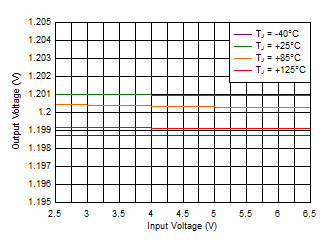
| TPS70612 |
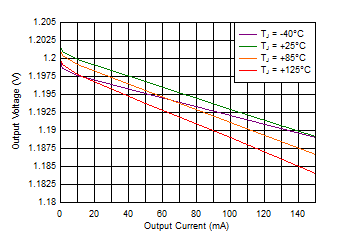
| TPS70612 |
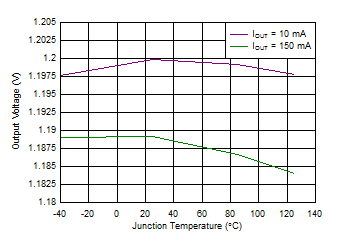
| TPS70612 |
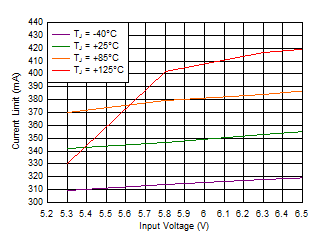
| TPS70633 |
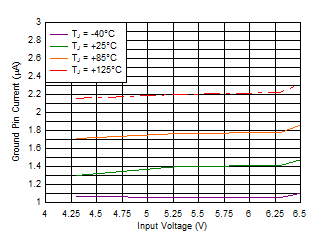
| TPS70633, EN = open |
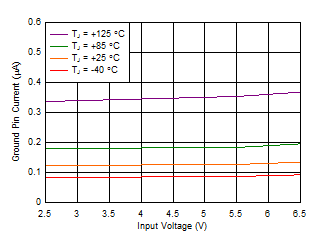
| Shutdown current, TPS70612 |
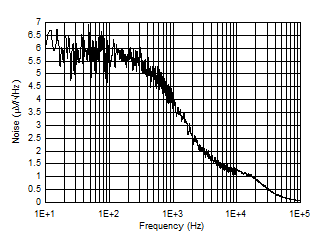
| VOUT = 2.8 V |
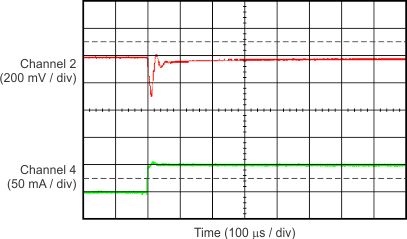
| Channel 2 = VOUT, channel 4 = IOUT, VIN = 2.7 V |
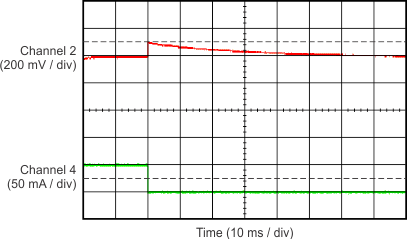
| Channel 2 = VOUT, channel 4 = IOUT, VIN = 2.7 V |
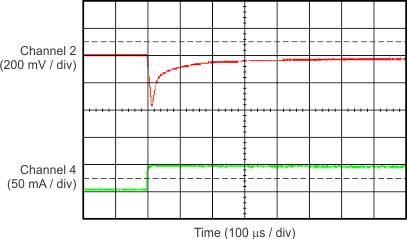
| Channel 2 = VOUT, channel 4 = IOUT, VIN = 4.3 V |
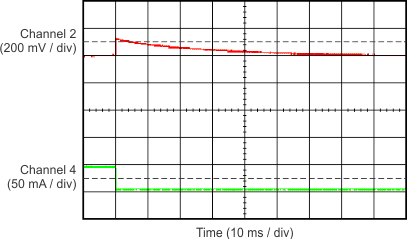
| Channel 2 = VOUT, channel 4 = IOUT, VIN = 4.3 V |
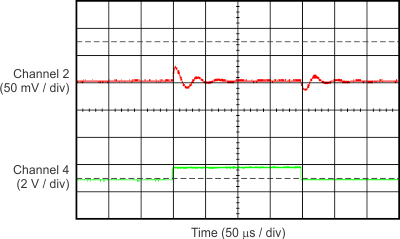
| Channel 2 = VOUT, channel 4 = VIN, IOUT = 10 mA |
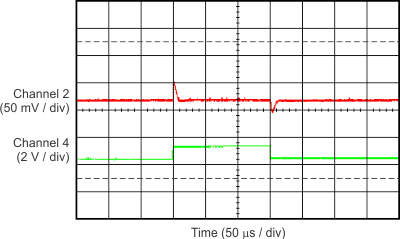
| Channel 2 = VOUT, channel 4 = VIN, IOUT = 10 mA |
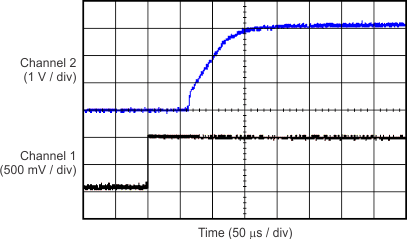
| Channel 1 = EN, channel 2 = VOUT, VIN = 4.3 V, COUT = 2.2 µF, TPS70633 |
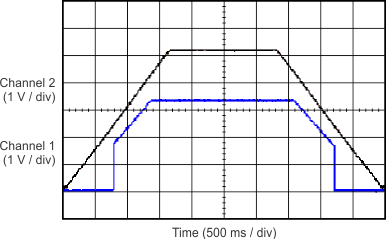
| Channel 1 = VIN, channel 2 = VOUT, IOUT = 150 mA, TPS70633 |
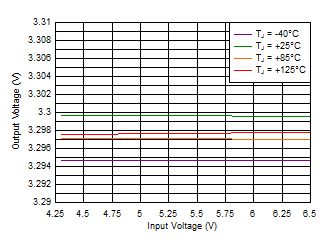
| TPS70633 |
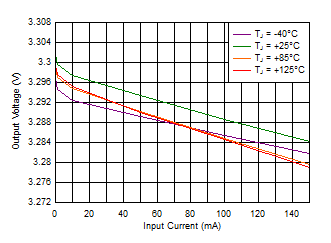
| TPS70633 |
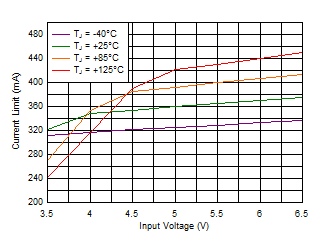
| TPS70612 |
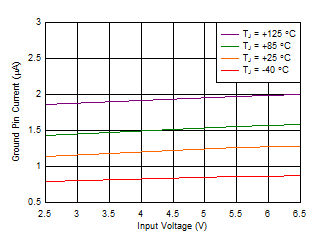
| TPS70612 |
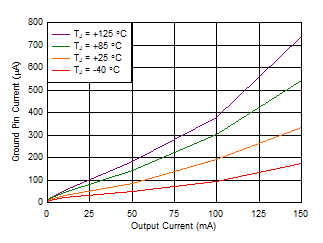
| TPS70612 |
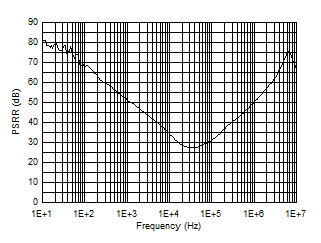
| VOUT = 2.8 V, VIN = 3.8 V, COUT = 2.2 µF |
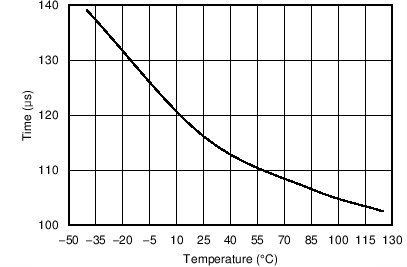
| TPS70612 |
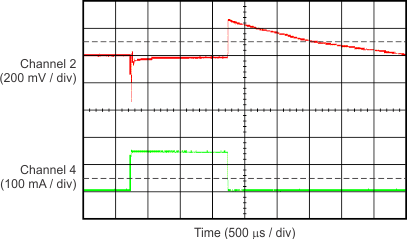
| Channel 2 = VOUT, channel 4 = IOUT, VIN = 2.7 V |
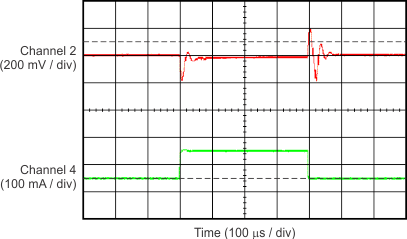
| Channel 2 = VOUT, channel 4 = IOUT, VIN = 2.7 V |
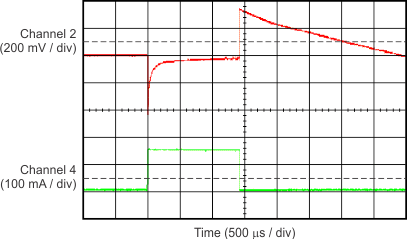
| Channel 2 = VOUT, channel 4 = IOUT, VIN = 4.3 V |
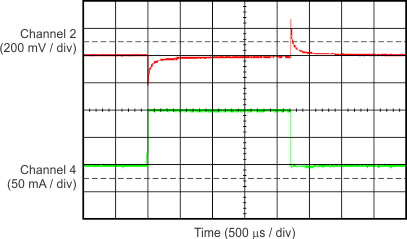
| Channel 2 = VOUT, channel 4 = IOUT, VIN = 4.3 V |
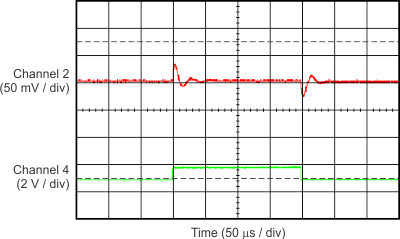
| Channel 2 = VOUT, channel 4 = VIN, IOUT = 50 mA |
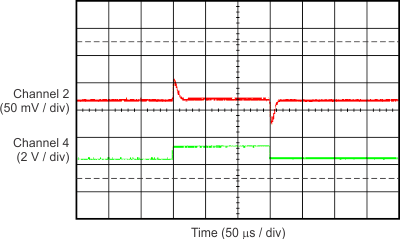
| Channel 2 = VOUT, channel 4 = VIN, IOUT = 50 mA |
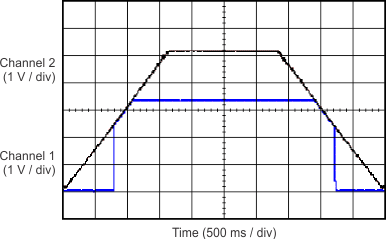
| Channel 1 = VIN, channel 2 = VOUT, IOUT = 3 mA, TPS70633 | ||